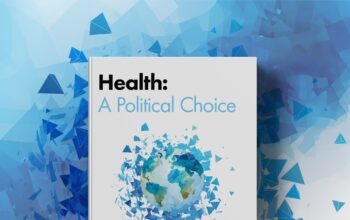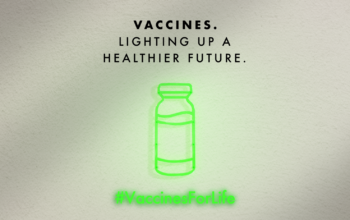Painting the whole picture behind a vaccine shortage
As we look forward to hosting the Geneva Pharma Forum during current World Immunization Week, finding solutions to pre-empt or mitigate vaccine shortages is top-of-mind here at IFPMA and for our members. What’s more, recently the first Access to Vaccines Index (ATVI) was published – a set of report cards rich in data, and painting a more complete picture of company action to increase access to vaccines, align supply and demand, and avoid shortages. As we head into this latest opportunity for global conversation, we take a closer look at the challenges and potential solutions to ensure that vaccines are always available to those who need them.
For those working with vaccines, or indeed any globalized system of supply and demand in our increasingly connected world, we know that price is just one part of the picture. The conversations this coming Friday will help us to see the color – the myriad of challenges, actors, and importantly solutions across the supply chain – and the many trigger points where we can work together to make systems better. The unique ability of the manufacturing industry to develop solutions at a global scale can pioneer broad-based improvements, and the recent index adds proof that IFPMA members are all doing well. But we must keep working collectively with others across the vaccines supply chain wherever we can, exploring the reasons behind shortages at every step, and what can be done.
To make a vaccine available – from raw materials, to research and development, through authority approvals, and finally shipped to patients who need them most – presents a huge number of steps where efficiencies to reduce delivery times could be made. Manufacturing processes take an average of two years for each production lot, and projects to increase capacity – if sustainability can be ensured – can take between five and ten years to be realized even with significant investment from the private sector. UNICEF data shows that in 90 countries (2011-15), only 11% of stockouts was caused by global supply shortage (Lydon et al. Vaccine 35 (2017) 2121-2126).
So while manufacturers can have big impacts, where are other pressures coming from, and what more can be done?
A major challenge lies in Post Approval Changes: research-based vaccine manufacturers like IFPMA members continually improve products and processes, applying science to create innovative technologies, expand capacities, respond to new regulations, introduce new raw material suppliers, and much more. These are collectively known as Post Approval Changes. However, a single change can take a lengthy four years to re-approve, rising to eight years in some countries and with no standard global process. Which means that while local- and national-level systems might be getting stronger, for vaccine manufacturers to supply the same product at the same standards of quality and safety globally, the challenge is getting tougher. The number of regulatory variables between countries is huge. In plain and practical terms, we need simplified and harmonized systems for approval times, in-country lot testing, and packaging requirements.
Harmonization is the single biggest win, to simplify regulatory hoops and make it easy for countries to work together. And manufacturers and public health authorities have many more opportunities to work more closely together: better forecasting, flexible purchasing mechanisms, better stockout notification systems, responding to outbreaks, and building national health programs that think about vaccine scale-up time.
The key message here is that the more collaboration and communication that can we have between stakeholders at the outset, the better the results for all. Shortages are an issue that all actors want to solve, but they’re also global, complex and can happen at many points in the supply and demand chain. So which are the solutions that we can activate immediately for rapid effect, and which should we study together in depth to discover the root-causes?
The value of innovation and simply speaking together earlier can clearly improve the vaccine supply chain at every step, and will work if the global community is involved. As for other potential solutions, we’re looking forward to hearing from the community at the Geneva Pharma Forum, and the insights and practical steps to support our belief that a future without vaccine shortages can be achieved.
………………………………………………………………………………………………………………………..
You can follow the event in person by registering here: info@ifpma.org (places are limited) or online clicking here: Geneva Pharma Forum on medicines and vaccines shortages 28 April 2017.
A must read infographic: From shortages to sustainable supply chain: what’s behind medicines & vaccines shortages
A must watch video: Interview with Anders Vinther on vaccines & medicines shortages
Author






